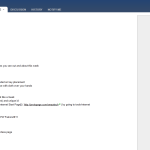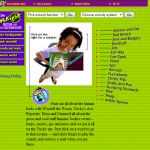January 24, 2012
Top 13 Web 2.0 Tools for Classrooms
Every day in my K-8 tech classes, I use a variety of cloud-based tools to enhance the learning experience for my students. There are more of these ‘Web 2.0’ tools than I can keep up
with, but when you teach tech or coordinate technology for your school, ‘keeping up’ is part of your job.
Here’s how I determine which of these hundreds (thousands?) of tools are student-ready:
- Before I introduce a tool to my class, I try it myself. Can I get it to work with ease? Is it intuitive or will it require teaching? Does it work as promised? Are there intrusive ads? Will students get distracted as they work through the steps required to complete the assignment?
- Next, I query my social networks to determine the experiences of fellow tech teachers. Have they had much success with this tool? Any problems they ran into? Is it stable? If my e-colleagues find that the glamour of the Web tool is only skin deep, I move on. Of course, sometimes I’m ahead of the curve and my colleagues are unfamiliar with the tool. Truth, that rarely happens. There’s always someone somewhere who has experience.
If a tool passes these two tests, I try it in class. Since I teach over 430 students every week, that’s the true beaker. If a program survives the hands-on grade-level labor of dozens of students, if they can get through the required steps to create a project that supports their learning in new creative ways and still have fun, I’ve found a good tool.
Here’s my list of 2011 favorites that have run that gauntlet:
- BigHugeLabs—create trading cards, posters, puzzles, mosaics using the student’s own images. Quick, easy, pain-free and fun
- Bubbl.us—create mind-maps to brainstorm topics. No-frills and easy to use
- GettingTrickyWithWikis–format wikis with lots of bling to better communicate ideas
- iMindMap (free version)–create mind maps easily that inspire brainstorming
- Jing–take screenshots and screencasts for free. No ads. Require registration to install software.
- Polldaddy–create surveys and polls and embed them into blogs, wikis, websites (for free)
- Scribd–share lots of document formats with the public or a limited audience for easy viewing online. Embeddable into websites, blogs, and more.
- Tagxedo–create word clouds with unique shapes, colors, that can be saved, printed and embedded to wikis, blogs, etc.
- Voki—create avatars that interact visually and audibly with others
- Wikispaces–free wikis for educators. They’re simple to use and easy to set up.
- Wolfram Alpha Widget Maker–instantly add live computational knowledge to your blog or website. Create your own or use someone else’s.
- WordPress.com–build and share a blog with students or classes or colleagues. WordPress is the simplest of the many I’ve tried, with the most options.
- Xtranormal (free version)–produce short films with virtual characters and a text to speech facility
Here are a few more great ones that I didn’t consider in my Top 13 because most educators already know about them:
- Edmodo–a micro-blogging service (like Twitter) for teachers and students. Use it to share information, set and collect assignments and more.
- Glogster—create media rich online posters that can be embedded into wikis, blogs and more.
- Google Apps–offer a suite of Google Apps designed especially for educators. Include Google Docs, Google Mail, and Google Sites
- Khan Academy–offers a library of over 2,700 free videos covering everything from arithmetic to physics, finance, and history and 268 practice exercises,
- Livebinders—organize your resources in an online three ring binder
- Prezi–create awesome presentations live and on the web!
- Voicethread—collaborate online by sharing media and comments. The perfect tool for whole class projects.
- Wordle–generate word clouds quickly.
Should be on the list, but I’ve had too many problems either in their set-up or stability of their platform:
- MuseumBox—lets you describe an event, person, or historical period by placing items into a virtual, interactive box. Unfortunately, several times, it has been inoperative and that’s a nonstarter for a teacher. We plan a lesson. All the parts must work reliably.
- Only2Clicks–a visual collection of website links. Same problem as MuseiumBox.
- Wallwisher–build a wall to share ideas, online notices, notes, and more. Same complaint as the first two.
Please take a minute to vote in my poll and share which tool is your favorite. If you have a different one, leave a comment.
[polldaddy poll=5790905]
Jacqui Murray is the editor of a technology curriculum for K-sixth grade and creator of two technology training books for middle school. She is the author of Building a Midshipman, the story of her daughter’s journey from high school to United States Naval Academy midshipman. She is webmaster for five blogs, an Amazon Vine Voice book reviewer, a columnist for Examiner.com, Editorial Review Board member for Journal for Computing Teachers, IMS tech expert, and a weekly contributor to Write Anything. Currently, she’s editing a thriller for her agent that should be be out to publishers this summer. Contact Jacqui at her writing office or her tech lab, Ask a Tech Teacher.






